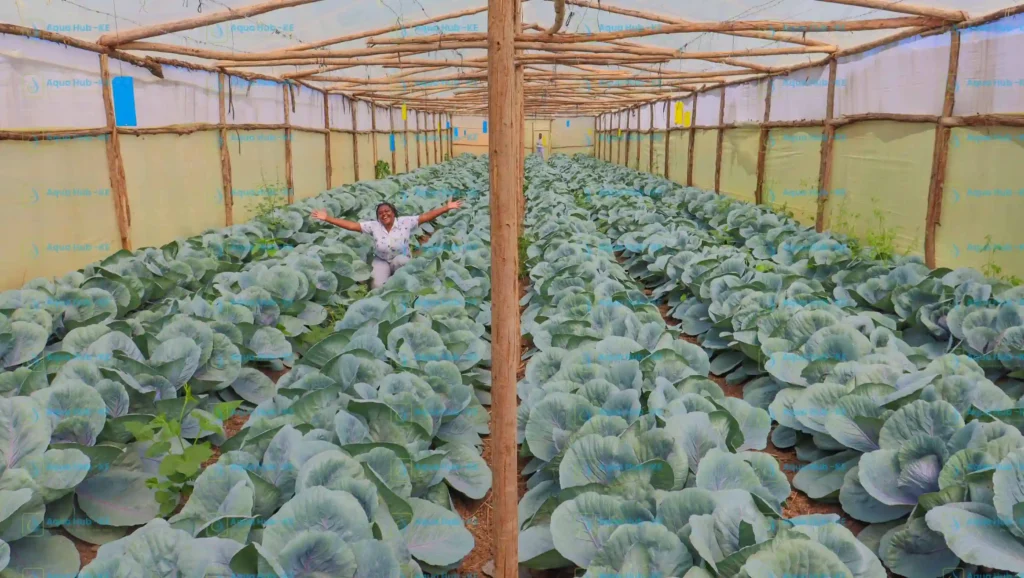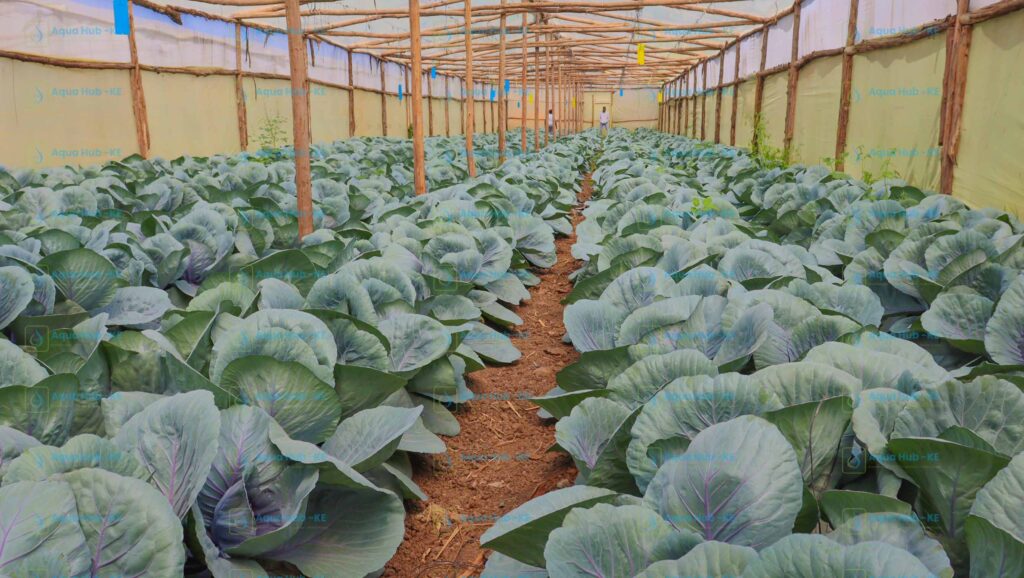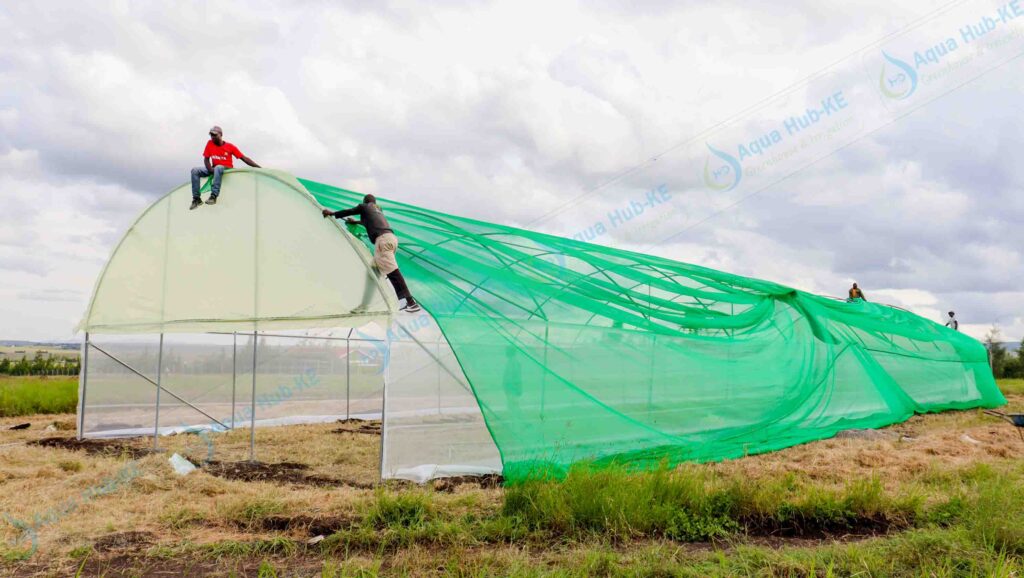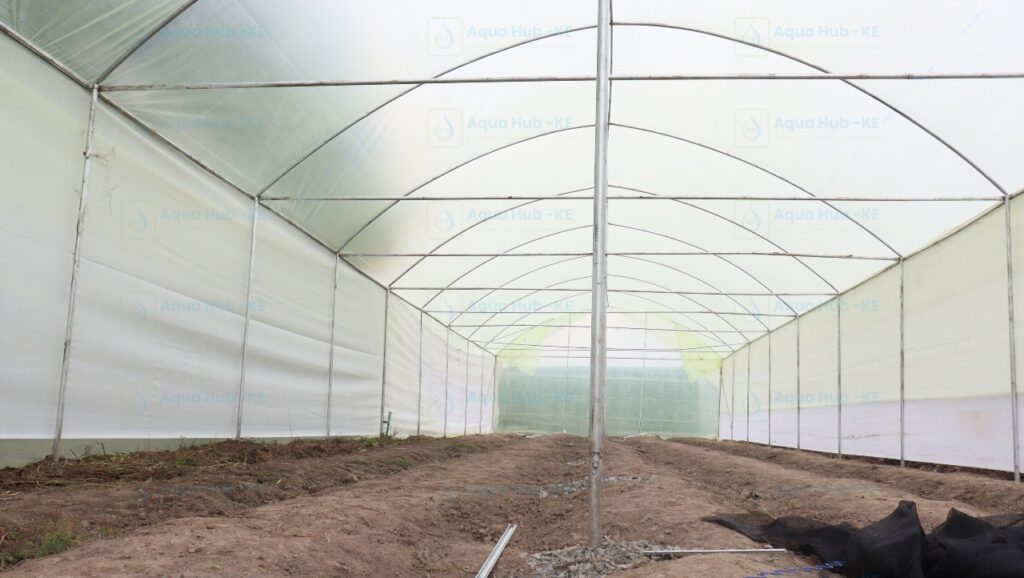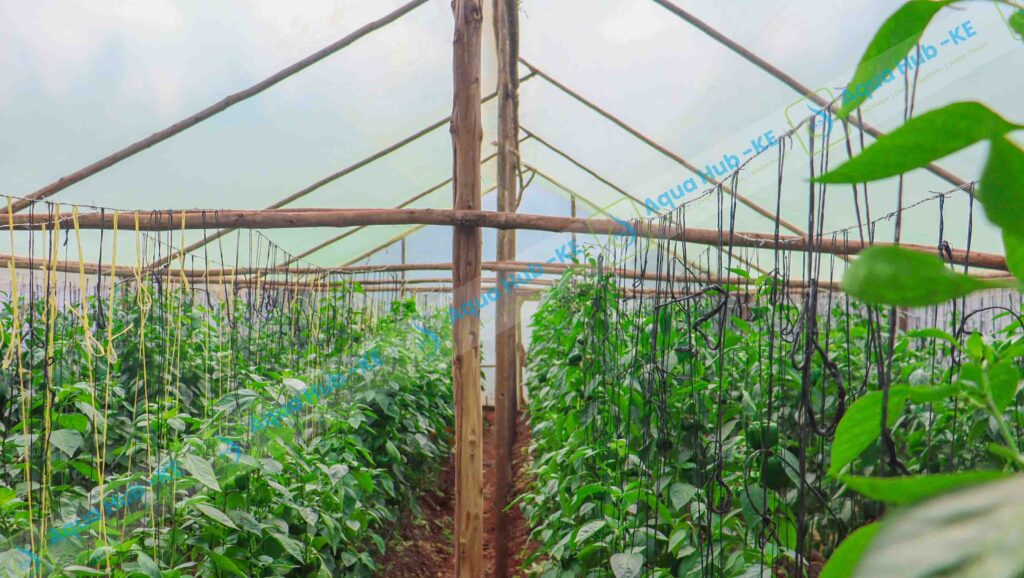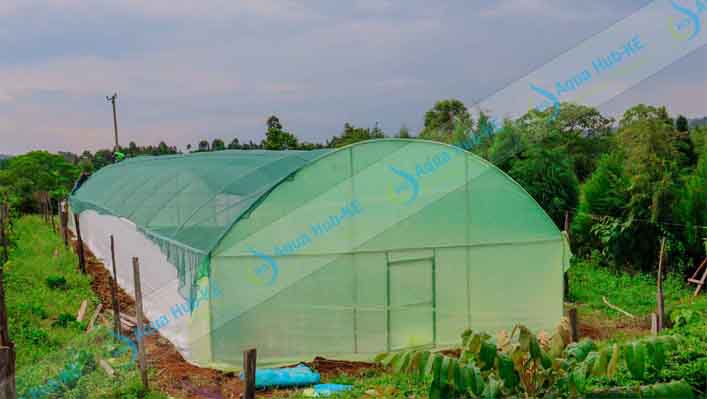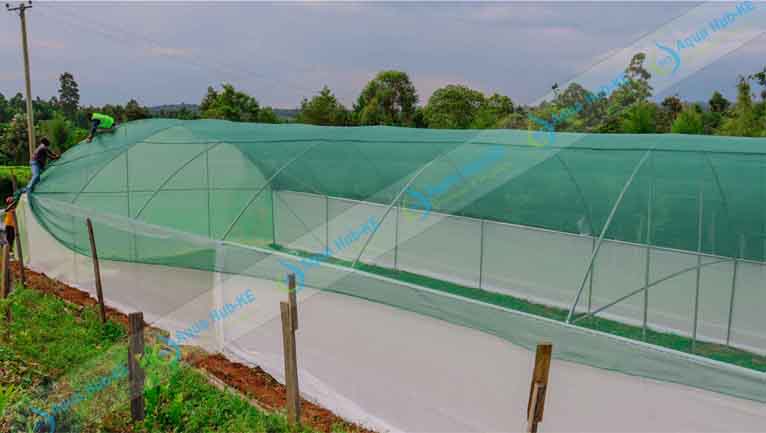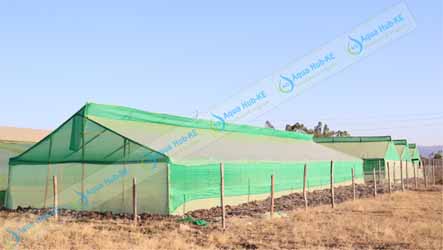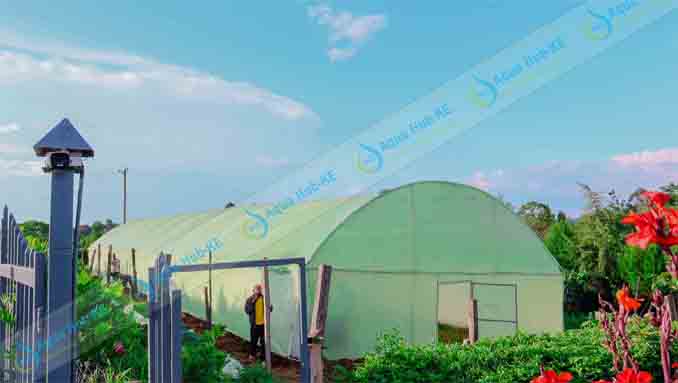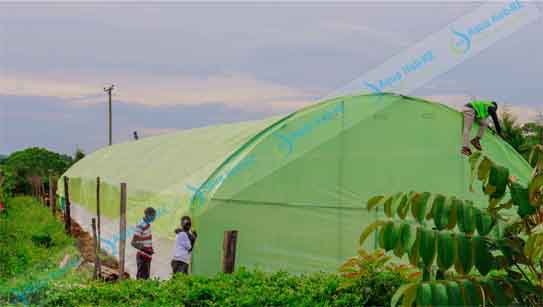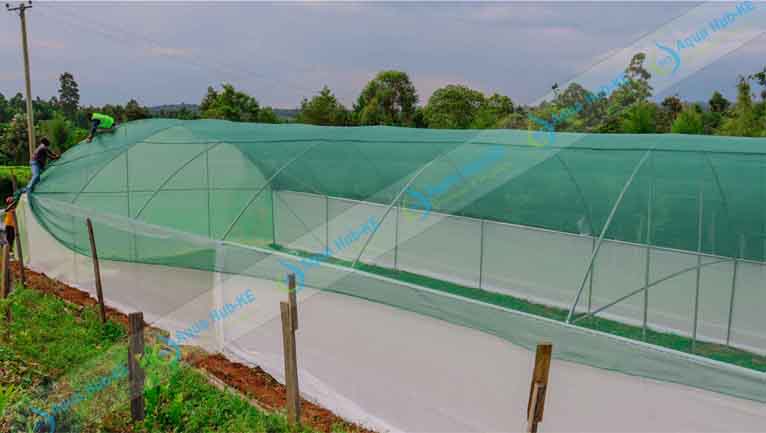Blog
Wooden Greenhouse Price : Quality Yield 2025
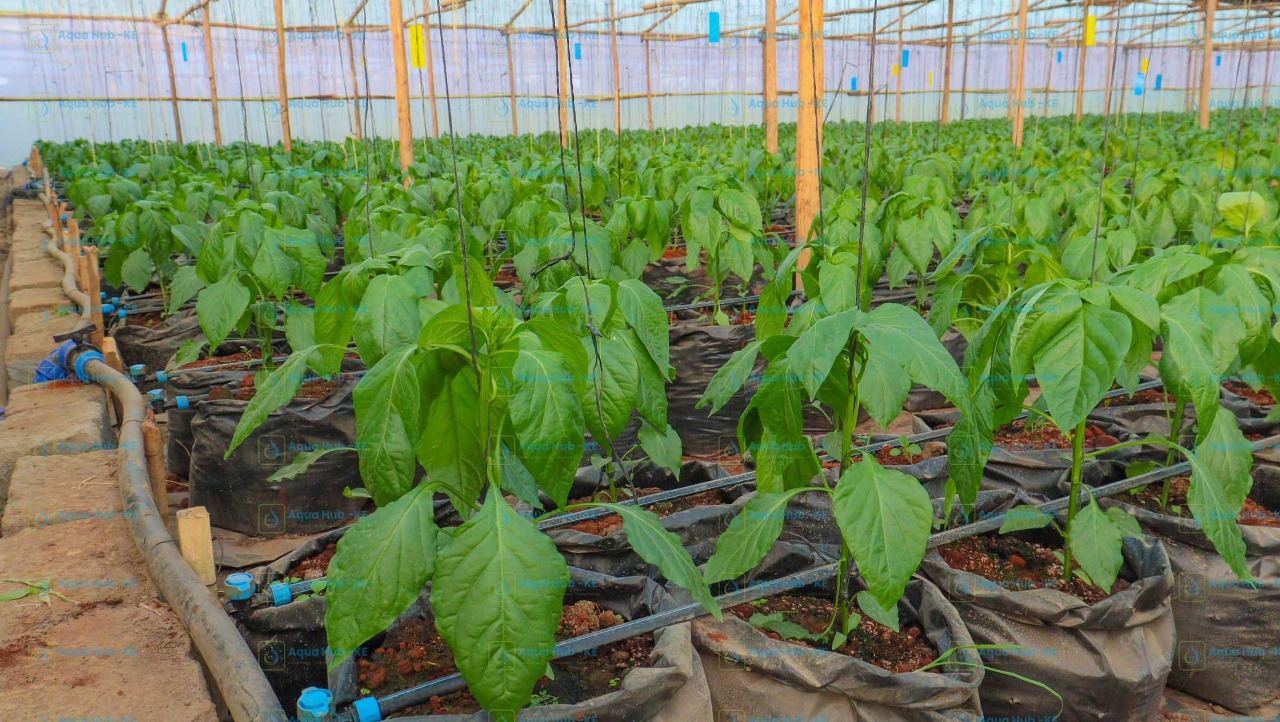
With the sustainability and optimal climate that comes with wooden greenhouses, low-income individuals can also benefit from high profit crops. Wooden greenhouse price in Kenya, often between KES 150,000 and KES 400,000 are less costly compared to metallic greenhouses.
Get your desired wooden Greenhouse in Kenya at your comfortable price from Aqua Hub LTD.
Call us on ; 0790719020
Breakdown of Wooden Greenhouse Price in Kenya
|
Greenhouse Size |
Cost |
Plant population |
|
8 Meters x 15 Meters |
Ksh140,000 |
500-600 |
|
8 Meters x 24 Meters |
Ksh180,000 |
700-800 |
|
8 Meters x 30 Meters |
Ksh225,000 |
1000-1200 |
|
16 Meters x 30 Meters |
Ksh430,000 |
2000-2400 |
|
24 Meters x 30 Meters |
Ksh550,000 |
3000-3600 |
Wooden Greenhouse Price in Kenya: Items Included
- Greenhouse Polythene – the transparent waterproof cover for housing the structure. Important for enabling the hot conditions for optimal temperature.
- Wooden structure – wooden poles or timber for designing the wooden greenhouse skeleton structure before covering with polythene material.
- Profiles and Wires – ideal for holding the polythene material onto the greenhouse structure.
- Nails – fixing wooden poles to form the structure requires steel nails.
- Sand, cement and ballast – for firm reinforcement of wooden horizontal wooden poles.
- Shade net – some crops grown in greenhouse require low light thus shade nets could be used.
- Insect barrier or net – a knitted net for preventing the entry of insects, often used to cover the ventilation part. Also applicable on side walls as it enhances temperature regulation while preventing insect entry.
- Drip Irrigation Kit – for precise irrigation. High value crops including capsicum, tomato, cucumber and strawberry are watered with drip kits.
Other Items You Need for Wooden Greenhouse
- Water Tank – you need plastic water tank setup in tower 3m high to ensure gravitational pressure ideal for functioning of drip irrigation. Plastic tanks are ideal since they do not rust easily.
- Crop Stakes or Support – you require support ropes for proper growth of tall growing crops. Capsicum and tomatoes are examples.
- Mulching paper – to prevent water loss and fruit rots. Plants like strawberries require mulching paper.
- Grow bags (planting bags) – if your soil is unsuitable for your desired crop, you could use planting bags with imported soil.
- Cocopeat or peat moss – important growing medium for seedling propagation or indoor cultivation. Used on behalf of soil in areas with infected soil.
- Seedling trays – plastic trays for propagating seeds. If you are a seed starter you should consider using trays.
Our Wooden Greenhouse Suits All; Here’s Why
- We deal with custom sizes while considering stability. If you don’t meet our standard sizes, we also design an affordable greenhouse as per your specifications.
- Wooden greenhouse cost could be reduced if you have your own poles. Straight poles are ideal.
- No need for complex wooden greenhouse, you can do a simple greenhouse with basic requirements and still benefit from the venture.
- Shade houses are also doable types of greenhouse or growing environments of low cost for seedlings and other crops.
Designs of Our Wooden Greenhouse
The types of wooden greenhouse we construct are;
- Vented Gabled Designs – V-shaped roof with a ventilation on one part of the top roof.
- Non-vented Designs – has no vent on the roof.
High Profit Crops to Recover Wooden Greenhouse Price in Kenya
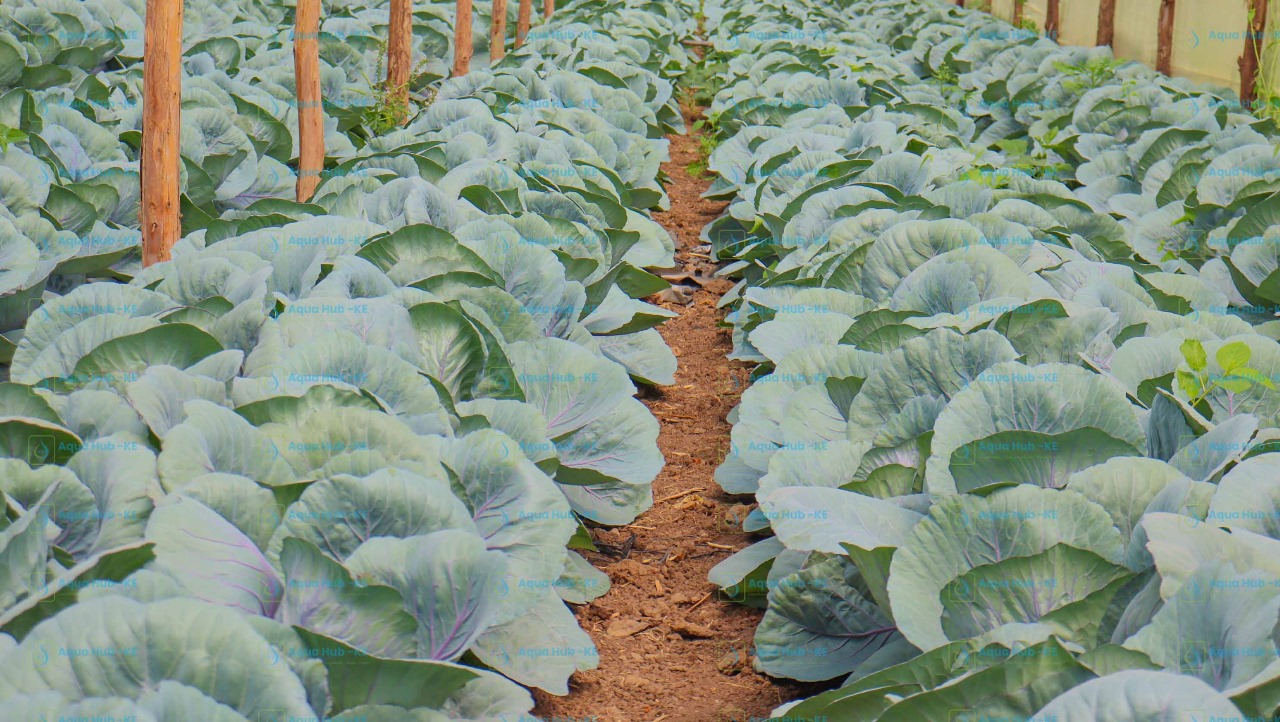
Variety of crops can be grown inside the greenhouse environment including vegetables, herbs and fruits. However, you should be careful when choosing which crops to venture into as some crops may not always attract market demand.
The crops that are known to be in consistent demand include.
- Capsicum – the different varieties of capsicum especially the red, green and yellow ones maintain a high cost annually. Price often ranges from KES 110 to KES 200 per Kg.
- Strawberry – known for producing juicy berries that are sold at high prices in the market.
- Cucumber – attracts high prices often KES 10 to 20 each.
- Kales – Sukuma wiki is the common vegetable consumed in Kenya. It’s demand is always high and attracts high costs in urban areas.
- Broccoli – another expensive vegetable sold in supermarkets and grocery stores.
- Lettuce – often ideal for preparing expensive meals such as burgers.
- Tomato – tomatoes are the most popular cooking ingredients. Even though prices may drop due to high supply, they are profitable when proper timing is done.
- Cabbage – quality cabbage is produced in greenhouse environment. With proper timing it has a potentially high return on input.
How to Construct Wooden Greenhouse in Kenya
Wooden Greenhouse construction starts by planning and designing to ensure proper installation. Our team will first visit your site as per the agreement to conduct analysis and take measurements. Once we have the correct measurements, we calculate the materials required and give you a quote. After paying we deliver the greenhouse construction materials prior to the day scheduled for installation.
Steps for Set up of Wooden Greenhouse
- Digging and Laying of Wooden poles for Greenhouse Structure
- Fixing the wooden structure with nails.
- Attaching profiles along the edges of the structure
- Attaching the greenhouse polythene on the structure.
- Fitting the insect net and shade net on the ventilation
- Making the door and entry pouch.
- Setting a drip irrigation system.
What Criteria is used when Choosing Wooden Greenhouses?
You may be wondering why not just use any wooden greenhouse design for cultivation. While all designs enhance optimal temperature, they are designed for different regions, crops and growing capacity.
For hot areas, you need wooden greenhouses with big ventilation and vented designs could be best.
On the other hand, cold regions would require a smaller vent and side roll up features.
Tall growing crops that require crop support will require high gable height while short crops will do fine with short gable height of 3 m.
The number of crops you intend to grow or in other words, the size of land set aside should guide you to select the size of greenhouse to build.
Practices for High Yield in a Greenhouse
- Proper maintenance of the greenhouse structure is important to ensure consistent growing conditions for growth.
- Ensure precise and sufficient irrigation by using the appropriate irrigation schedule provided by your agronomist.
- Propagate or buy hybrid seedlings to ensure quality production.
- Use certified seedlings and fertilizer.
- Mulching should be done to prevent fungal infection in capsicum and strawberries.
- Always follow proper spacing of beds and planting lines. Driplines should be 2 per bed as opposed to 2-4 in open field farming.
- Keep track of the calendar to ensure proper irrigation control, transplanting and fertigation.
- Pruning should also be done to get rid of wilting leaves and improve fruiting in capsicum and tomato plants.
Strategies to Control Pests and Diseases in Greenhouses
- Applying insect nets is essential for greenhouse farming but still not enough to keep pests away.
- Use sticky traps to get rid of aphids and whiteflies.
- Incase of soil borne diseases such as fusarium, growing bags should be used.
- Drip irrigation is ideal to prevent fungal infections.
- Always plant disease resistant crop varieties.
- Proper disinfection before entering the greenhouse at the entry porch is necessary.
- Clean tools before use on the greenhouse.
- Agronomy support is essential for proper recommendation on inputs and pest control method to use.

